
- Drag Racing Tutorial
- Drag Racing - Home
- Drag Racing - Overview
- Drag Racing - Classes
- How to Play Drag Racing?
- Disqualification of a Racer
- Drag Racing - Modification of Cars
- Drag Racing - Points to Remember
- Drag Racing - Organizations
- Drag Racing - Champions
- Drag Racing Useful Resources
- Drag Racing - Quick Guide
- Drag Racing - Useful Resources
- Drag Racing - Discussion
Drag Racing - Quick Guide
Drag Racing - Overview
Generally, drag racing is a contest between two racers who have to reach the required destination in order to win the race. The races are always started by an electronic device known as a Christmas Tree.
Each racer has to start a timer from the start line. The timer stops automatically when the racer reaches the destination. This start to finish timing is known as Elapsed Timing.
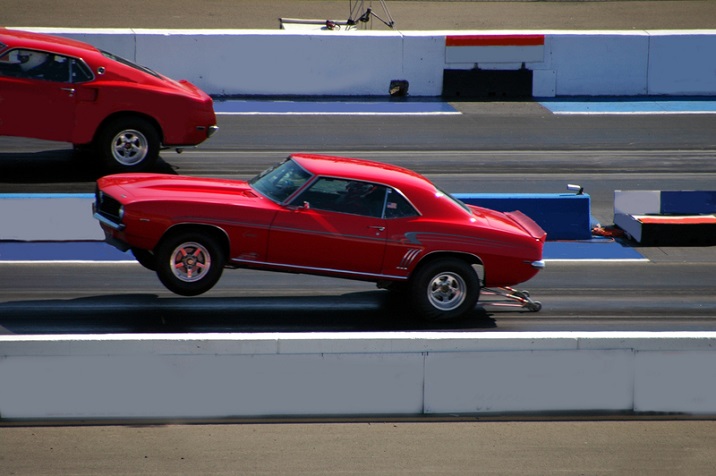
A Brief History of Drag Racing
If you look back through the hourglass of time, drag race is much older than it seems. It’s root stretch back to post war era during the period of 1930s.
During 1940s, the racing done side by side became popular by the term drag race. The reason why it became the name is unknown. It might have started when racers motivated one another to drag their car out of their garage and race one another. In case, maximizing the revs, drivers may hold the car in gear longer, or drag through the gears. The reason behind the term quarter mile distance is as unknown as the term drag race.
In 1951, to create order from chaos, an individual body known as the National Hot Rod Association (NHRA) got created. It acts as a governing body for drag racing and hosts events all over the United States and Canada. Apart from that, the sanctioned body would also familiarize safety and performance standards in terms to legitimize the drag racing. Both the NHRA and Hot Rod magazine were popular in the parks during the time of 1950s.
Drag Racing - Classes
There are many classes in drag racing and each class has its own restrictions and its requirements. The restrictions include weight, size, modification, body style and many others.
The National Hot Road Association (NHRA) proudly admits that it has over 200 classes in comparison to the IHRA. Some classes at IHRA have their own multiple sub-classes due to differences in engine components and other features.
Let’s now discuss some of the famous classes.
Top Fuel Dragster (TF/D)
These are also called the diggers and are the fastest class. Amongst all the faster accelerating machines in the world, these machines can run through the drag strip in less than 3.8 seconds and cross top speeds of over 325mph.
Top Fuel cars are 25-feet long and weigh 2.320 pounds in race-ready trim. Methanol with 90% nitromethane is used as fuel.
Top Fuel Funny Car − Funny car comes with a shorter base of wheel and a body of carbon-fiber that remotely looks like a production-based automobile. Funny cars are also known as floppers and they can routinely run in the 4.0s and can also exceed around 315 mph.
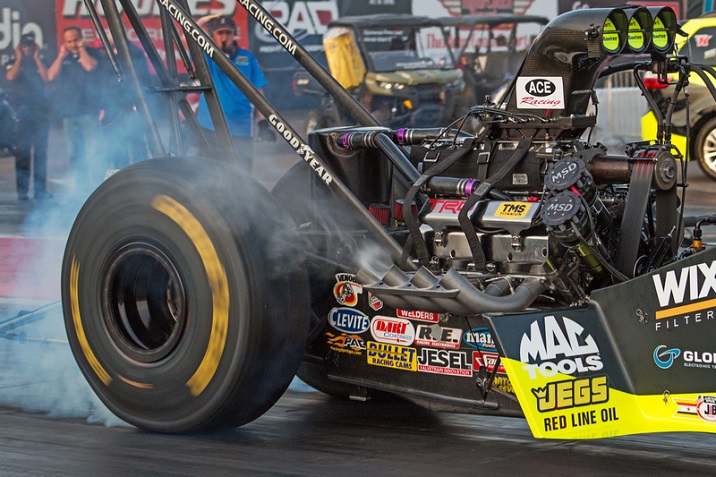
Pro Stock (NHRA, IHRA/MMPSA)
It is popularly known as factory hot rods because of having a resemblance of production-based cars. They have to maintain a stock appearance. These cars are also known as door slammers. The Pro Stockers have the ability tore cord quarter-mile times in 6.4 second range having a speed over 210 mph.
Their wheels can revolve for more than 10,500 rpm and can produce 1,300 horsepower. The NHRA’s engines cannot produce 500-cubic-inch (8.2 L) displacement whereas the IHRA/MMPSA cars have the capacity to run at a maximum of 820 cubic inches (13.4 L). The IHRA/MMPSA cars are also known as Mountain Motors.
Pro Stock Motorcycle of (NHRA and ANDRA)
They are extremely modified vehicles, having the capacity to catch the speed of more than 195 mph in 6.8 seconds. It also features a purpose-built tube chassis with a lightweight and an aerodynamically improved model of original bodywork.
Pro Modified − It is also known as Pro Mod or Top Doorslammer (T/D). It has some engine restrictions with very high power.
Cars running on blowers limit to 527 cubic inches (8.6 L), whereas cars with nitrous oxide have the potential to run up to 740 cubic inches (12.1 L). This type of class is recognized worldwide, although the names are different in North America and Australia.
Top Alcohol Dragster (TA/D)
It is also known as Top Methanol Dragster in the FIA competition. It resembles Top Fuelers having significant differences.
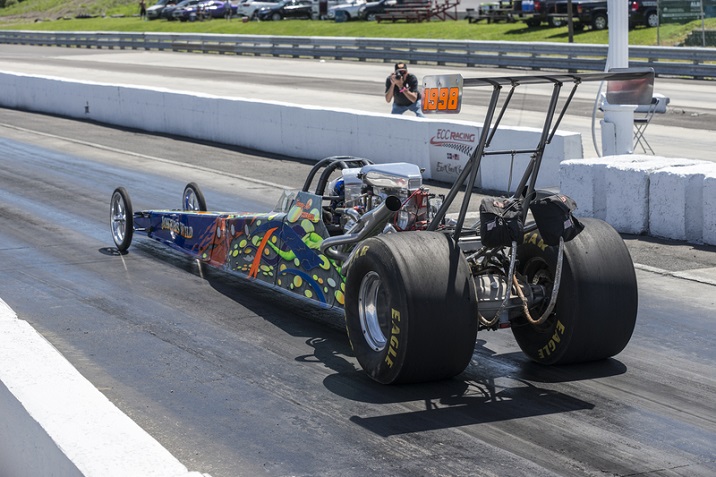
A supercharged methanol-burning engine might be used. A combination of an injected nitro methane can also be used as a fuel. These cars can pick up the speed of 280 mph in 5.1s.
Top Alcohol Funny Car (TA/FC)
It is also known as Top Methanol Funny Car for FIA competition. Alike in physical appearance as nitro-burning Funny Car counterparts, it has three-speed transmission. The use of methanol fuel in the Top Alcohol Funny Cars is restricted.
Top Methanol Funny Cars can catch speeds up to 265 mph in 5.4s. Alcohol Funny Cars of IHRA has replaced the NHRA’s Pro Stock Bike as it is in the fifth pro category.
Playing Environment
The race track for playing the drag race is known as drag strip, where all the drag races are being conducted. For a drag track, a quarter mile is the best length track. It has a length of 1320 feet or 402 m. Some tracks are of 201 m and are known as 8th mile. The races for the premier class category runs for 4.8 meter or 120 feet.
After crossing the finish line, it allows the vehicles to stop in a special made room which is known as the shutdown area. The shutdown area has a common feature known as water box. At that place, all the vehicles heat up their tires and start the burn outs to clean. It helps the vehicles to improve its grip during a race. The drag strip has a set of lights which illuminate during the start of the race, giving signals to the racer. These lights are known as Christmas. There are also lanes which helps the vehicles to return to the pit area.
The whole race is performed inside a stadium with a massive amount of sitting arrangements. The race is within a large boundary which covers the whole racing track.
Drag Racing - How to Play?
In this chapter, we will discuss some intricate details of Drag Racing.
Burnout
Before starting the race, also known as pass, the players perform a burnout to heat the tire and improve traction. After this, the cars are lined-up on the starting line. This lining-up is known as stages.

Christmas Tree
In an Informal drag race, the race can be started by any means, which includes flagwaving and arm-dropping. Professional races are started through Christmas Tree. Each driver lane consists of a Christmas tree which is a series of light. A Christmas Tree is used to start the professional drag races.
Each lane has one Christmas Tree which consists of a column of lights. In every column, there are top two lights which are small amber lights and are connected to the light beams on the track. When it is broken by the vehicle's front tire or both the tires, it indicates that the driver has pre-staged of approximately 7 inches or 180 mm from the starting line and then staged at the starting line.
There are three large amber lights below the staging lights, a green light, and a red light. When both the drivers are staged, the race will start when the tree is activated, illuminating the three large amber lights, Green light illuminates at the end. There are two standard sequences of lights −
Simultaneously all the three amber lights flash. It is followed by the green light in 0.4 seconds also known as the Pro Tree.
The amber lights illuminate in the sequence of top to bottom with a 0.5 sec interval. The green light illuminates after 0.5 seconds. It is also known as the sportsman or the full tree.
Drag Racing - Disqualification of a Racer
A driver will be disqualified in case he leaves the starting line before the illumination of green light. In such a case, the red light will illuminate which indicates the disqualification.
Numerous measurements are taken for each and every race which includes the reaction time, the elapsed time of the race, and the speed. Reaction time is the time between the illumination of green light and the start of the race.
Elapsed time is a time between the leaving of the vehicle from the starting line till it reaches the finish line. The speed of the vehicle is measured with the help of a speed trap situated near the finish line, which indicates the approximate maximum speed of the vehicle while it was in the race.
The first vehicle to cross the finish line is declared as the winner. The winner is the driver who has the lowest reaction time and elapsed time both. The elapsed time doesn’t determine the winner. It only measures the performance.
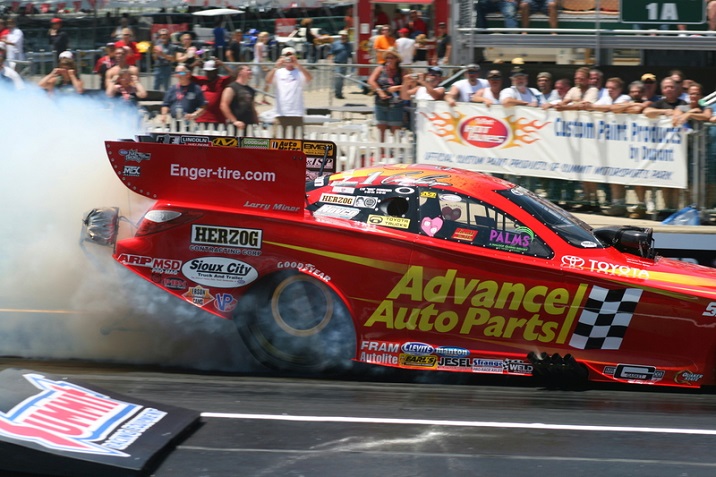
As elapsed time excludes the reaction time so it can be considered that even though the car elapsed faster but the driver didn’t react fast enough to the green light.
During practice, it is beneficial for the driver to start the car before the green light by a fraction of a second. It is the process when the car starts at an interval of split second, which is the time when the yellow light goes out and the green one illuminates.
In case, the car lefts the beam of the front light before the green light illuminates, the driver will be red-lighted and as no further possible foul will be allowed, the driver will be disqualified.
Holeshot
When a red light foul is committed by a driver, then there is a huge possibility that the other driver will also commit the same mistake as they will also start the car following the front one. Even though they will do that they will not be disqualified as they will still be leaving after the green light. The front driver in the race is always have the Holeshot. A Holeshot is a win when the driver’s elapsed time is higher but the reaction time is lower.
The driver can also be disqualified due to infringement of any other rules and regulations,
- If he crosses the centerline between the lane.
- If he touched a wall.
- If he strikes a track fixture.
- If he fails to stage or technical inspection.
- If he runs faster than the speed assigned for the respective vehicle.
Boundary Line Violation
There can be a case where the red light driver has to commit the violation of red light due to boundary line violation done by another driver. In such a case, red light violator wins, though the boundary line violator has started the race as per the rules.
Eliminator Racing
During a format of common eliminator racing, the vehicle and the driver who loses get eliminated from the race and the winner goes to race the other winners till only one winner left.
Bye Run
If a situation arises when a driver doesn’t have an opponent to run with, he then takes a solo pass known as Bye Run to eliminate the benefit coming from less used engine.
In most eliminator formats, first round is best suited for the bye runs. During bye run, some of the drivers drive slowly so as not to stress the engine to an excessive point even though the choice of lane in every round is always determined by the time in previous round making the strategy possibly harmful.
Drag Racing - Modification of Cars
During the drag racing events, the extent of the modification of the vehicle depends upon the classification of the vehicles.
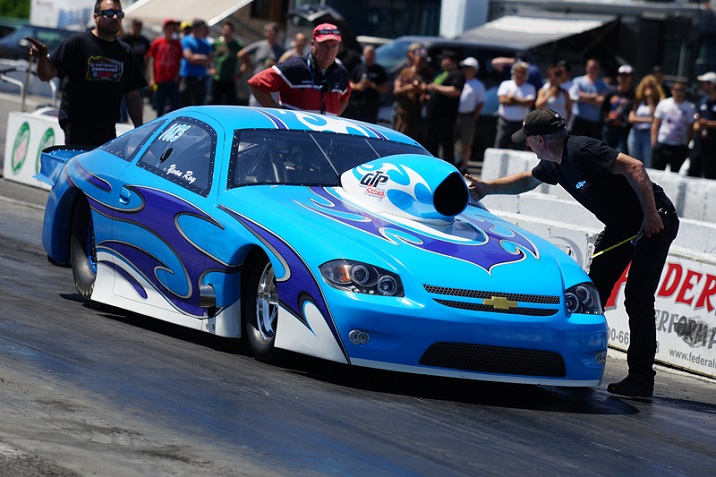
The above-mentioned divisions are there to ensure if the cars are evenly matched during the race or not. All of the divisions cannot be applied. As the drag racing vehicles are modified to make it lighter and more powerful as compared to their standard form, it make them special.
A lighter vehicle is that whose power to weight ratio is more which helps to gain maximum acceleration. The increase of power depends upon the modification done in the engine.
Enhancement in Cars
The car is the main component on which various strategies are made. All the performance enhancements must comply with the rules of IHRA and its restrictions based on the class of the car which is running.
Some of the common enhancements are −
Usage of slick tires which should be smooth and soft enough to grip the track.
Methods to introduce more air into the motors such as the superchargers, turbochargers, and nitrous oxide also known as N20
Drag Racing - Points to Remember
There are several points that are essential on the way towards the track in drag racing. The first one is not to enter the lane of the opponent or the driver have to face disqualification.
Double qualification
It is a situation in which one driver starts the game as a foul start whereas the other one crosses into the lane of the foul start one. In such case the foul start driver will win.
Shifting Gears
Shifting gear is done manually by drivers. It increases the rpm of the wheels. The shifting is mostly done when the ascending curve for the higher gear is crossed by lower gear’s descending curve.
Pedalling
The credibility of a good driver is often judged by how he is pedalling. In fuel class cars, pedalling is the process of adjusting the throttle which will prevent the loss of traction. Almost all drag racers use a tachometer to judge the shift points.
Crossing the finish line needs bracket racing process only. If a car has a huge lead, it is advisable to slow down before crossing the finish line to avoid a breakout. Particularly in bracket racing, it is widely common to see the vehicle on the lead get its brake lights come out before even finishing the line.
Sand bagging
Sometimes the driver in the race who is in a bracket race position do a slower dial in which is the predicted estimate timing(E.T). Then he/she runs and when reaching the finish line taps the brakes lightly or do the pedalling which eventually reduce the E.T which give them a window to run closer to the dial in faster.
In case both of the cars break out, the car which is closer to their dial-in wins. However, there is a minimum elapsed time in a Junior Dragster racing, The cars which posts lower than the minimum will get ejected.
Drag Racing - Organizations
NHRA and IHRA
The majority of the drag racing events in North America are organized by the National Hot Rod Association (NHRA). NHRA was founded in 1951 by Wally Parks. Since then, it has dedicated itself to safety and also providing millions of racing fans. Initially the park started NHRA with a primary objective of getting the hot rudders from the street and legally involving them in drag strips. NHRA evolved itself into a largest promoter of world’s professional drag racing since.
NHRA permits the fans to access behind the scenes actions during the race. Apart from that, NHRA has the open pit policy which allows the fans to have a view of how the team rebuild the engines.
Fans can easily approach the drivers as they are often found in their pit areas either chatting with fans or signing autographs. Sometimes fans get the opportunity to get behind the wheel by themselves in the Nitro Alley Fan Zone in a variety of racing simulators. These are one of the few reasons why NHRA has such loyal fan base.
The second largest organization which looks after drag racing events is the International Hot Rod Association (IHRA). Almost all the drag strips of NA are associated with either of the bodies.
ANDRA
The drag racing events in Australia are looked after by the Australian National Drag Racing Association (ANDRA), which was established in 1973. They claim that they are the best in the world outside the US.
NZHRA
New Zealand has a body called the New Zealand Hot Rod Association (NZHRA) which used to look after all its drag racing events.
In April 1993, the governance over drag racing was removed from the NZHRA and shifted to a new body called the New Zealand Drag Racing Association (NZDRA).
FIA European Drag Racing Championships
Since 1996, under the flag of FIA, the European Championship is being organized. Currently, there are six championship events which are being hosted in four countries; Santa Pod Raceway – UK, Tierp Arena in Sweden, Alastaro Circuit in Finland, and Hockenheim Ring in Germany.
Five kinds of competition classes is being running in the championship: Pro Modified, Top Methanol Dragster, Pro Stock Car, Top Fuel Dragster and Top Methanol Funny Car.
The competition starts traditionally at Santa Pod in May and ends on September on the same track with the European Finals. In the race, all the drivers of more than 10 countries participate. The FIA European Drag Racing Championship is administered by Speed group.
Drag Racing - Champions
Let us now have a brief synopsis of some of the champions of Drag Racing and their careers.
Don Garlits
Don Garlits is an American Car driver who is considered as the father of drag racing. He was the one who designed the top fuel dragster rear engine. He has the record of reaching the speed of 270 miles per hour in quarter mile. He has won many awards in his career. In 1955, he participated in NHRA competition for the first time. In 1959, he participated in US Fuel and Gas championships and his presence brought more than 30,000 spectators.
In 1964, he won US Nationals championship. In the same year, he participated in International Drag Festival in England which was a series of six events. In 1987, he temporarily retired due to many accidents. He withdrew his retirement in 1991 but he retired again before the end of 1992.
John Harold Force
John Harold Force is a drag racer from America who has been funny car champion for 16 years and in his full career, he achieved 143 victories.
He started his career with Corvette and Monza cars and later raced with Oldsmobile Cutlass. In 1994, Force drove a Chevrolet and in 1995 and 1996, he drove Pontiac.
In the tenure of 1978 to 1985, he could not get any victory but from 1986 to 1995, he won many races and championships.
From 1996 to 2001, he was ranked first in all the competitions he has taken part in. In 2003, he won his tenth World Cup title.
Kenny Bernstein
Kenny Bernstein is a drag racer from America. He started his career in 1979 as a funny car driver and won Funny Car Championship which was his first championship in 1985. He won it consecutively for the next three years.
In 1990, he drove Top Fuel Dragster car. In 1996, he won NHRA title. Bernstein retired in 2002 but he again came back in 2006 in Funny Car division.
In 2007 season, he took part in two events but failed to qualify due to which he employed new crew which helped him to improve himself. But still, he could not win any race so he retired again.
Shirley Muldowney
Shirley Muldowney is a drag racer from America and is the first lady to take part in drag racing. In 1977, 1980, and 1982, she won NHRA Championship.
In her full career, she won 18 NHRA titles. She also competed in IHRA event in 1971 and won that title.
In 1884, she met with an accident due to which she was away from racing for a long time. After returning, she again took part in small competitions. She took retirement in 2003 but before that she took part in NHRA.
Bob Glidden
Bob Glidden is a drag racer from America who has won 85 NHRA National Events. Bob Glidden started his career in 1960 with Ford cars. In 1972, he participated in first pro-race and was ranked second. In the next season, he won his first national championship by participating in US Nationals event. In 1974, he won Spring Nationals and US Nationals events.
In 1978, he participated in Winston event in his Ford Pinto car and won five national competitions. In 1980s decade, he won many competitions including Winston title. In 1990, Glidden won three events and only one event in 1991. In 1992 and 1993, he won two events each. In 1995, he won his final event and took retirement in 1997.
rica Enders-Stevens
Erica Enders-Stevens is a drag racer from America who started racing at the age of 8 years. In 1993, she won four Junior Championships in 8 to 9 years old category. She won Junior Dragster of the year title in 1995.
She participated in first national event in 2000 and became youngest NHRA finalist. She was also awarded NHRA Sportsman Rookie of the Year. In 2004, she participated in NHRA Super Gas class and won it. In 2012, she won NHRA Pro Stock. She is still active in the drag racing.
Alexis Dejoria
Alexis Dejoria is a drag racer from America who competes in NHRA events. Toyota Camry funny car is the car which she drives in her races. She started her career in 2005 in Super Gas category. Later on, she moved to Super Comp dragster.
In the same year, she won Sportsman Nationals event. Further, she raced in the events using Top Alcohol funny car. In 2011, she won her first NHRA National Event. In 2014, she participated in many events and won many titles.